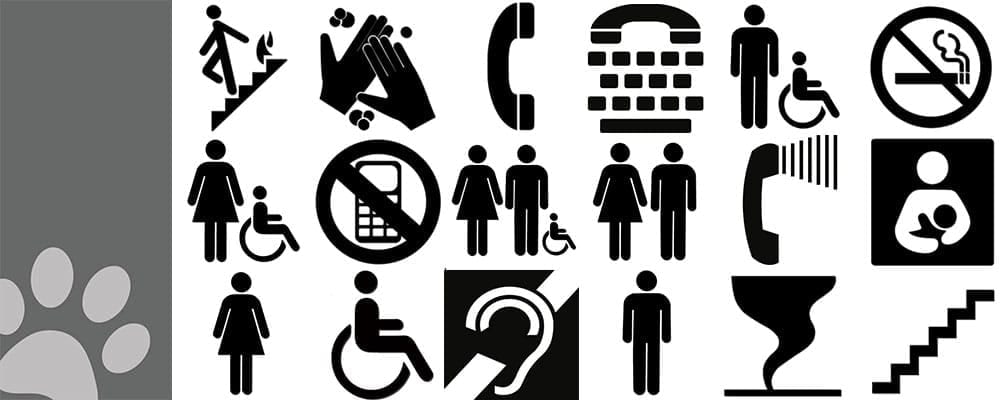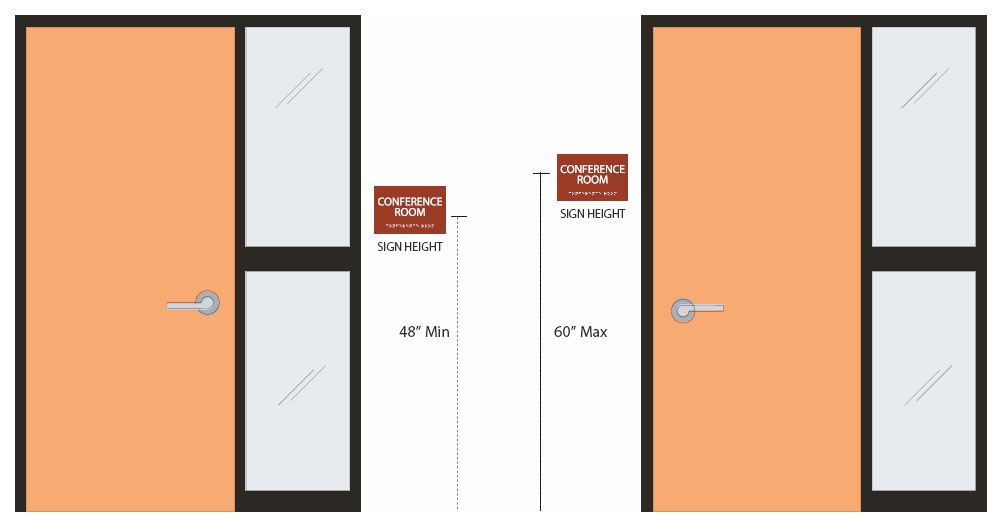Exactly How ADA Signs Enhance Accessibility for Everyone
Exactly How ADA Signs Enhance Accessibility for Everyone
Blog Article
ADA Signs: Making Sure Ease Of Access and Conformity in Public Spaces
ADA signs plays an indispensable function in ensuring availability and conformity within public areas, considerably adding to an inclusive atmosphere for people with disabilities. As we check out the subtleties of ADA signs, from responsive functions to make intricacies, it's essential to think about exactly how these aspects integrate to maintain the legal rights of all individuals.
Relevance of ADA Signage
In modern culture, the value of ADA signs expands past mere compliance with lawful requireds to symbolize a commitment to inclusivity and availability for all individuals. These indicators are crucial in developing atmospheres where individuals with specials needs can navigate public rooms with the exact same simplicity and self-reliance as those without impairments. By offering standard and clear information, ADA signage ensures that every person can access facilities, services, and details without obstacles.
The relevance of ADA signs lies in its ability to boost the high quality of life for people with disabilities by promoting equivalent gain access to. It eliminates the barriers that may otherwise prevent their ability to take part fully in area life. Moreover, these signs function as visible signs of an organization's devotion to diversity and equal rights, showing broader social values that champion the legal rights and dignity of all people.
Moreover, ADA signage plays a vital role in public security. By guiding individuals to leaves, restrooms, and various other essential facilities, it ensures that all people, no matter of physical ability, can evacuate securely throughout emergencies. In summary, ADA signs is not simply a regulatory demand yet a powerful tool for cultivating a equitable and comprehensive culture.
Crucial Element of Compliance

Placement is vital; signs should be installed in locations that are easily noticeable and obtainable. Normally, signs must be installed in between 48 and 60 inches from the ground to make certain accessibility for both standing and mobility device customers. Responsive aspects, such as Braille, are necessary for people with aesthetic disabilities, offering vital information in a non-visual layout.
High-contrast colors between the text and background are necessary to enhance readability for individuals with low vision. The ADA mandates particular contrast proportions to guarantee quality. Additionally, character dimension is an essential factor to consider, with minimal height requirements dictated by the watching distance to guarantee readability from different angles.
Design Factors To Consider for Accessibility
Designing obtainable signage calls for a precise method to guarantee it fulfills the demands of all individuals, especially those with specials needs. This involves considering various design elements that boost readability and usability. Key elements consist of the option of font, color contrast, and responsive attributes. Font styles ought to be sans-serif, with straightforward and clear letterforms, to facilitate simple analysis. The size of the text is similarly important, with ADA guidelines recommending a minimal height based upon seeing range to make certain clarity.
Contrasting shades between message and background are crucial for exposure, particularly for people with aesthetic problems. A high comparison ratio aids distinguish the text from its background, enhancing readability under various illumination conditions. Additionally, tactile aspects, such as Braille and raised characters, are crucial for individuals who are blind or have low vision. These aspects must be situated at a regular elevation and position to ensure easy gain access to and comprehension.
In addition, the placement of signage plays a significant duty in availability. Indicators need to be set up in locations that are easily reachable and unhampered. Ensuring that signage is mounted at ideal elevations and angles allows all users, including those making use of wheelchairs, to interact with them effectively.
Usual Errors to Avoid

An additional common mistake is the inaccurate placement of signs. ADA guidelines define precise height and area demands to guarantee that indicators are obtainable and easily noticeable by all individuals, consisting of those utilizing mobility devices. Overlooking these standards not only interferes with accessibility but additionally runs the risk of non-compliance with legal requirements.
Additionally, inadequate contrast between text and background is a regular oversight. Appropriate comparison is essential for readability, particularly for people with low vision. Designers sometimes select colors that are visually appealing yet do not have the essential comparison, providing the message tough to determine.
Last but not least, some developers stop working to integrate tactile aspects, such as Braille, which are crucial for individuals that are blind. Leaving out these features not only leads to non-compliance with ADA guidelines yet also restricts gain access to go to this web-site for a sector of the populace that depends on tactile info.
Future Trends in Signage
Innovations in modern technology and increasing awareness of inclusivity are shaping the future patterns in signs style. As culture comes to be extra aware of diverse demands, the integration of clever technologies try this website into signage is gaining traction. Digital signs, as an example, is developing to include interactive features and real-time updates, which can be important in offering dynamic information in public areas. These indications typically integrate touch screens or gesture-based controls, making it possible for customers to browse content customized to their particular demands.
One more emerging pattern is the usage of increased reality (AR) to improve customer experience. AR-enabled signage can overlay electronic info onto the physical setting, supplying aesthetically impaired people with auditory or haptic comments. ADA Signs. This technology not only boosts availability but likewise creates an appealing experience for all users
Sustainability is also a substantial element affecting signage patterns. Environmentally friendly products and energy-efficient lighting options go now are being prioritized to align with global environmental objectives. Advancements in materials scientific research are leading to the growth of more weather-resistant and sturdy signs.
Conclusion
ADA signage plays an essential duty in guaranteeing ease of access and conformity within public rooms by incorporating tactile aspects, high-contrast colors, and calculated positioning. The adherence to ADA criteria not just promotes safe navigating for people with handicaps yet additionally signifies an organization's dedication to diversity and inclusivity. By avoiding usual blunders and embracing future patterns, public rooms can remain to progress these worths, making certain that the rights and self-respect of all people are valued and promoted.
ADA signs plays an indispensable role in guaranteeing ease of access and compliance within public spaces, significantly contributing to a comprehensive setting for people with impairments. As we check out the nuances of ADA signs, from responsive functions to develop complexities, it's important to consider just how these elements coalesce to copyright the rights of all customers.In contemporary society, the significance of ADA signs extends beyond mere conformity with lawful mandates to personify a dedication to inclusivity and ease of access for all individuals. By providing clear and standard information, ADA signs makes sure that everyone can access centers, services, and details without obstacles.
ADA signage plays a vital function in guaranteeing access and compliance within public spaces by integrating tactile elements, high-contrast shades, and calculated placement. (ADA Signs)
Report this page